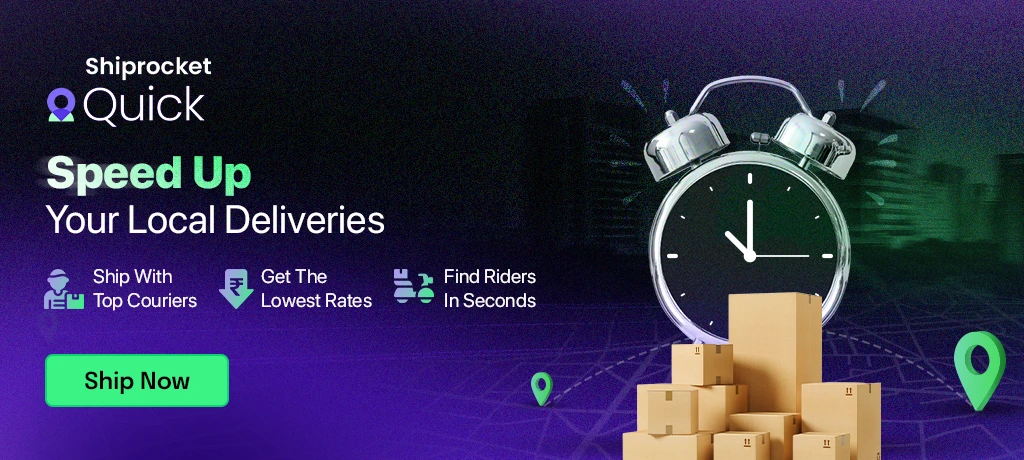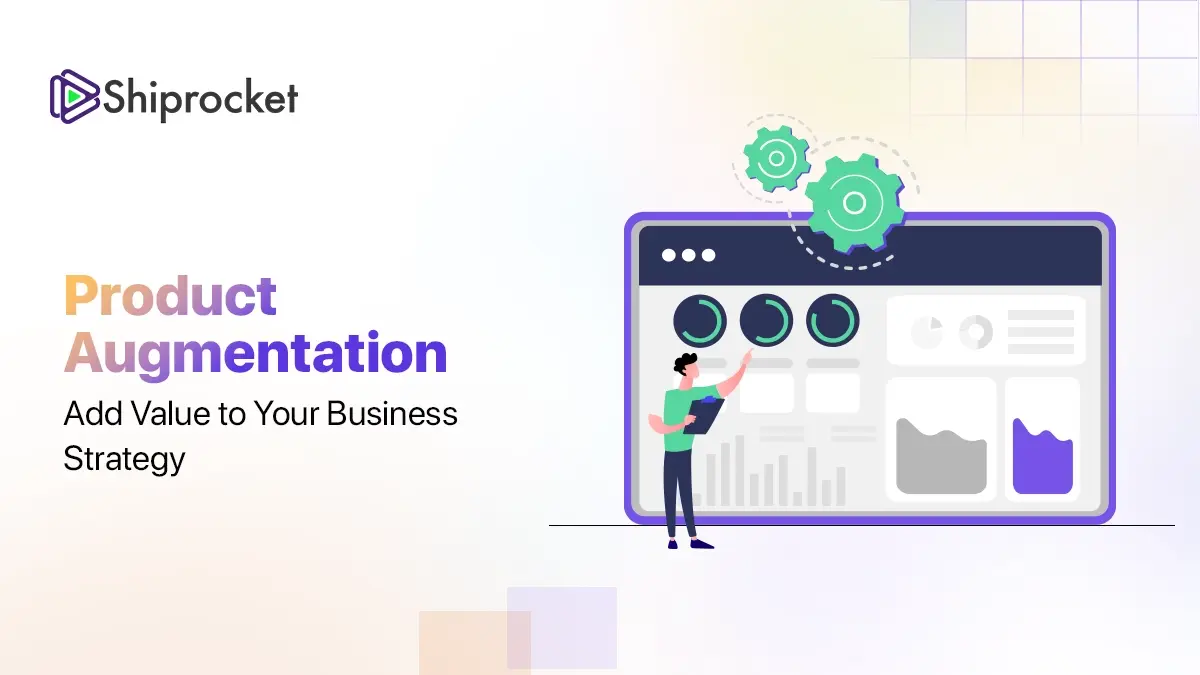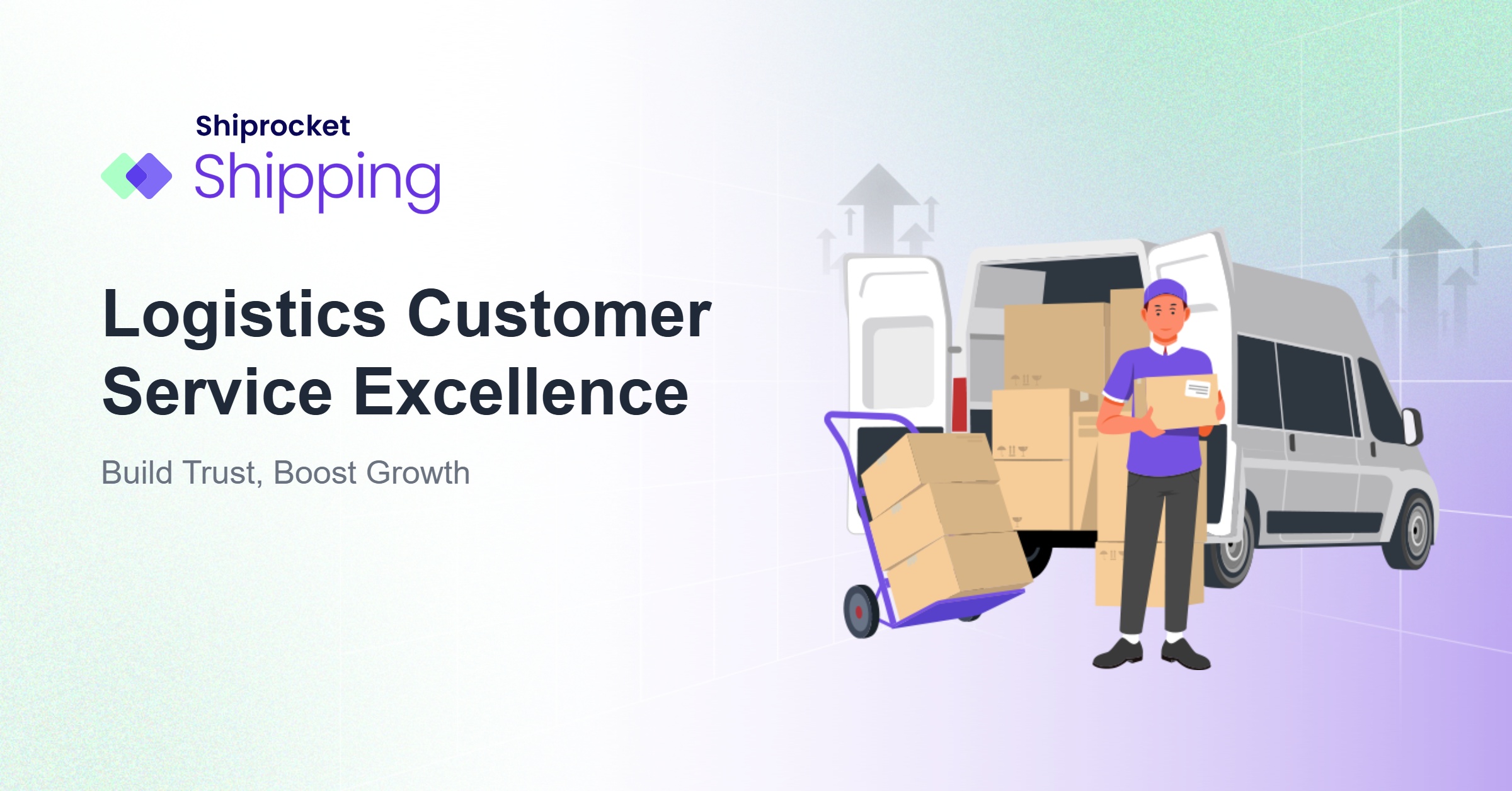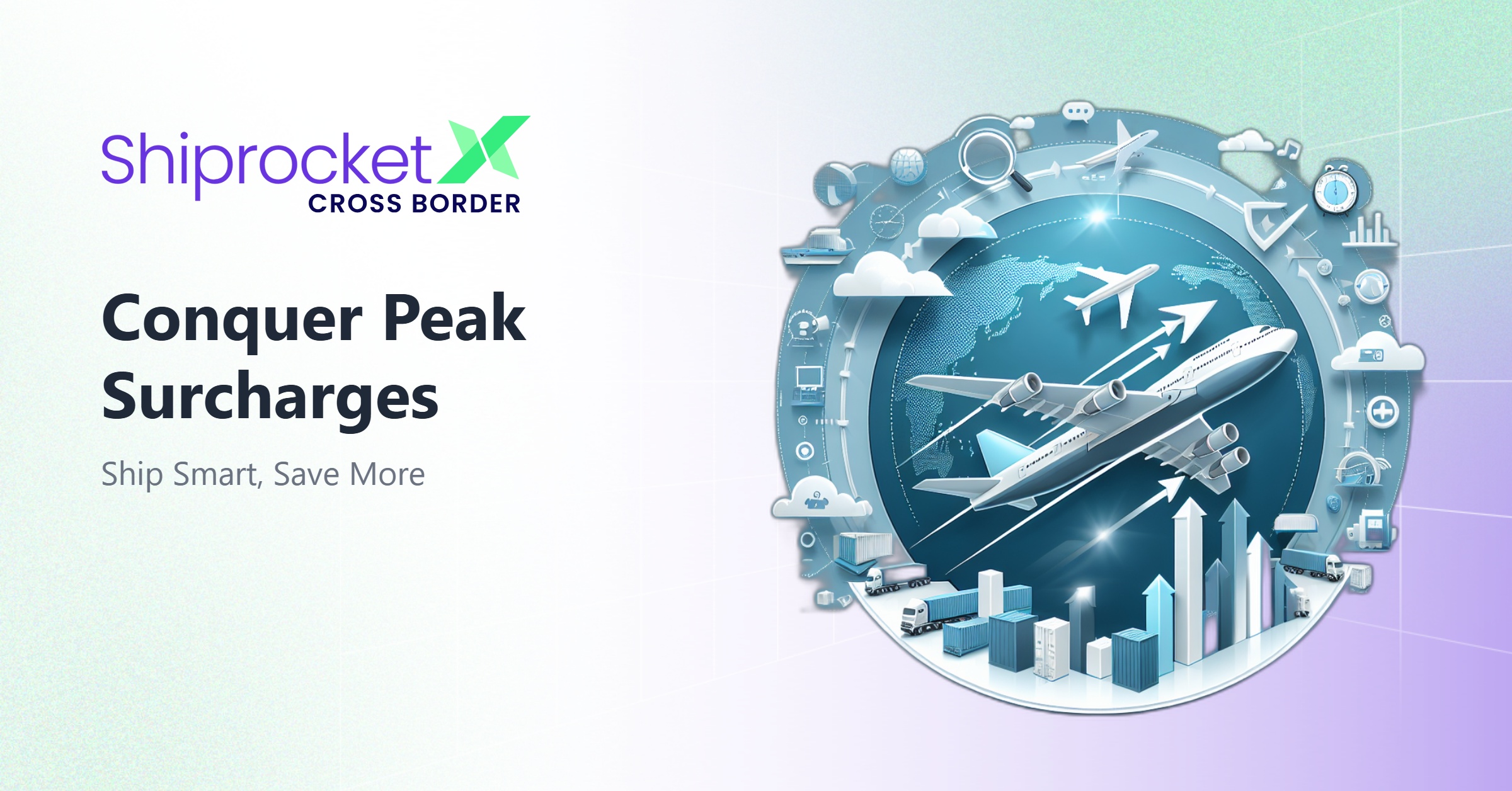When Should You Choose Self-Delivery Over Third-Party Logistics Services?
- Breaking Down Self-Managed Logistics Operations
- Why Do Some Brands Prefer Managing Delivery Themselves?
- The Upside and Downside of Using External Partners
- What Every Business Must Assess Before Choosing Self-Delivery?
- Real-World Success Stories of Self-Managed Deliveries
- Leverage Shiprocket Quick to Streamline and Scale Your Deliveries
- Conclusion
Choosing between self-delivery and third-party logistics comes down to your business goals, delivery reach, and customer expectations. Self-delivery gives you full control, faster local drop-offs, and a more personalised brand experience, it is ideal if most orders are from nearby areas and you have the resources to manage vehicles, staff, and tracking. On the other hand, 3PL partners offer wider coverage, scalability, and operational ease but with less control and customisation. Before making the switch, assess factors like delivery volume, costs, infrastructure, and customer needs. If you want the speed and flexibility of self-delivery without the operational burden, Shiprocket Quick offers same-day deliveries, route optimisation, real-time tracking, and easy scaling, letting you focus on growth while keeping your customers happy.
Making deliveries efficiently can be just as important to the customer experience as what you deliver. As your business grows further, you need to decide how to handle deliveries – should you do it yourself or depend on a third-party logistics company?
Data from recent studies shows that 37% of sellers outsource all of their fulfillment services, and 60% are still dependent on partial third-party logistics (3PL) for operations. This number shows that 3PLs are popular, while many sellers still consider handling deliveries on their own.
This is where the concept of self-delivery comes in. It gives you more control over your deliveries, faster services, and provides a personalised experience to your customers. But it’s not the best for every business.
So, keep reading this blog to understand why and when self-delivery is a better choice for your business!
Breaking Down Self-Managed Logistics Operations
Self-delivery means managing delivery yourself with your in-house logistics. This includes handling everything, from packing orders to managing delivery riders and vehicles, tracking shipment status, and interacting with customers, among other tasks.
Here is what generally goes into a self-managed logistics operation setup:
- Order Processing: Where you manage orders through your system, which gives you full control of the inventory and flow of orders.
- Packing: Your team packs each order in-house, ensuring the quality of the packaging, customising it for customers, and adding personalised notes.
- Delivery Management: You plan routes, assign drivers, and track shipments in real time to minimise delays and increase the efficiency of your deliveries.
- Fleet Operations: You can use your own or rented vehicles to make deliveries. This provides you with the flexibility of scheduling orders and better control over delivery times.
- Customer Support: You and your team handle all delivery-related queries, which allows you to provide quick responses and a more consistent customer experience.
Why Do Some Brands Prefer Managing Delivery Themselves?
Third-party logistics services offer convenience, but some brands still choose self-delivery to maintain more control and flexibility over deliveries. Some of the reasons that make them prefer managing delivery themselves are.
- Faster Deliveries to Specific Local Areas: If brands are serving a specific area, region, or city, they can offer same-day or next-day deliveries instead of relying on 3PL services.
- Better Control: Another reason is better control over what customers will experience, from packaging quality to how the delivery person interacts, etc. This helps brands to make sure of personalised and consistent deliveries.
- Profit Margins: Brands with high order quantities from some areas can reduce per-order costs by reducing middlemen’s margins and achieve better profit margins.
- Strong Brand Identity: Branded delivery vehicles, packaging, uniforms, etc., can help you build a strong brand identity in front of customers.
The Upside and Downside of Using External Partners
The external or third-party logistics partners are a popular choice for many businesses. But it comes with its own set of advantages and disadvantages, such as:
Advantages of Using 3PL Partners in Local Deliveries:
- 3PLs have a wide reach and have established networks across different regions, which helps you deliver to remote areas as well.
- With growing order volume, 3PLs can easily scale with you without needing additional investment in staff and infrastructure.
- They provide advanced tracking systems, automated order syncing, and analytics dashboards to you, which helps you simplify your logistics.
- 3PLs handle everything for you from delivery to warehousing, etc., so that you can focus on product development, marketing, and sales.
| Did You Know? Over 91% of businesses using 3PL report improved customer satisfaction, thanks to faster deliveries and advanced fulfilment technologies. |
The Disadvantages:
- You have less control over the team and system of 3PLs, which can result in inconsistent service quality or a delay in order delivery.
- There are limited personalisation options with third-party service providers.
- If you are a high-volume seller, then 3PL can add up fees, especially when margins are tight and deliveries are within a small area only.
- There are communication gaps between customer concerns and delivery issues, as you are not in direct contact with the delivery or operations team.
What Every Business Must Assess Before Choosing Self-Delivery?
Self-delivery is not applicable for every business. So, before choosing or shifting to the self-delivery model, you must evaluate whether your business is ready to take the lead or not.
Some of the key factors to assess while choosing self-delivery are:
- How Often and Where Do You Deliver? If most of your orders are from the local area and you get them regularly, then delivering on your own might save some money and time. But if you deliver orders to different cities, then it can be hard to manage.
- Do You Have the Setup? You need vehicles, a team, a parking space, a system to track orders, etc., without these, you won’t be able to deliver efficiently.
- What do Your Customers Expect? If your customers want quick deliveries and fast help with their issues, then handling delivery yourself can help you serve them better.
- Will it Save Money? Having your delivery set up means additional costs of fuel, staff, vehicle maintenance, salaries, etc. Make sure self-delivery is worth it.
- Are You Ready for The Responsibility? When you choose self-delivery, everything depends on you. So, make sure you and your team are ready to take the responsibility and can handle it smoothly.
Real-World Success Stories of Self-Managed Deliveries
Many Indian brands have adopted self-delivery models to get better control of the speed, service, and customer satisfaction. Here are some real-world examples that show how self-managed logistics can be beneficial for your business:
- Flipkart: It operates on its logistics arm, Ekart, which today handles most of the deliveries across India. They have an in-house setup, which helps you to make sure of reliable tracking, better service quality, and faster last-mile deliveries.
- Blinkit: It uses a fully self-managed delivery model, which is powered by dark stores and its fleet of delivery agents. Blinkit offers 10-minute delivery in selected locations and controls every step of the delivery process.
- Dunzo: It is known for quick local deliveries and has built a self-managed logistics network that operates across major Indian cities. Dunzo has its own riders and fleet management system, which helps them control every aspect of delivery.
- Bigbasket: It relies on its delivery fleet and stores for handling orders. Bigbasket is based on a managed system, which helps them maintain product freshness and deliver groceries to customers within hours.
Leverage Shiprocket Quick to Streamline and Scale Your Deliveries
While self-delivery helps you have control and flexibility over deliveries, managing logistics can be complex for you as your business grows. This is where Shiprocket Quick can help you.
Shiprocket Quick is designed to help you do hyperlocal deliveries efficiently without needing a logistical setup. We have the best services, which give you control over delivery timelines while having the operational ease of a reliable platform. With Shiprocket Quick, you can offer:
- Same-day or next-day deliveries across many pin codes.
- Track orders in real time while keeping customers informed at every step.
- Handle returns easily with a simplified pickup system.
- Optimise delivery routes to minimise delays and fuel costs.
- Scale faster without investing a lot of money in a delivery team.
Conclusion
Choosing between self-delivery and third-party logistics isn’t about cost but about what suits your business goals, needs, and customers’ expectations. So, if you are aiming for speed, control, and personalisation, then self-delivery can be your winning edge.
But don’t worry, you don’t have to manage it all alone.
With Shiprocket Quick, you can enjoy the flexibility of self-managed deliveries without having any operational stress. Whether you are delivering locally or scaling across cities, Shiprocket has the tools and networks that can help you grow faster and smarter.So, get ready to take control of your deliveries with Shiprocket Quick today!







